Rolling Stone ‘My Record Collection’ interview: Gary Lightbody of Snow Patrol, January 2012
An entry in Rolling Stone’s regular ‘My Record Collection’ interview series, published in the January 2012 issue. Click the below image for a closer look, or read the article text underneath.
My Record Collection – Gary Lightbody
Snow Patrol’s frontman takes us through his favourite albums
“I’m certainly the one who listens to the craziest music,” Gary Lightbody says of his four bandmates in Irish rock act Snow Patrol. “I make mix CDs for everybody. Sometimes they’re met with raised eyebrows. If I make one for my Mum, it’ll definitely be little country songs, some pop songs, nothing too crazy. But I might throw in a cheeky wee Four Tet song!” Lightbody is on a promo tour in Amsterdamwhen RS calls, ahead of the release of their sixth album, Fallen Empires.
Metallica – …And Justice For All (1988)
“This was their best record, and probably the one I listened to most. That style of music was a bit lost on me, because I couldn’t emulate it on guitar. It sounded like alien beings were creating the music: virtuoso guitar solos, and chugging that I couldn’t match with my right hand. Maybe it’s because I wasn’t masturbating enough as a teenager. But it was still intense; I’d always be thrashing away, headbanging to it in my room, or with my mates.”
Nirvana – Nevermind (1991)
“This record changed everything for me. It made me realise that I can actually do something with my guitar. Nirvana brought music into the real world, for me. Writing from the heart, rather than playing from the head and thinking from the ballsack. Kurt’s songs were extraordinary deconstructions of the human mind. As a sullen, sensitive 15 year-old – who was very insular, awkward, and loved his poetry – Nevermind spoke to me, just as it spoke to millions of other kids around the world.”
Super Furry Animals – Fuzzy Logic (1996)
“This is just an insane record. These are all songs that I still absolutely adore today. The Super Furries are one of those bands that opened up all sorts of music. People call them psychedelic because they don’t have any other words to describe them. They’re on their own little trip; in a class of their own. If their boundary-less expression of music has showed us anything, it’s that you should never keep doing the same thing again and again. It taught us to be adventurous.”
Young MC – Stone Cold Rhymin’ (1989)
“When I was 18 I started going to clubs, so my music tastes widened. I still listened to guitar music, of course – I mean, I’m in a band that plays guitar music – but I found a lot of dance music, funk, soul and hip hop. This is my favourite hip-hop album of all time. I love it when hip-hop is playful, and not about guns, bling and bitches. His records were about things like ditching school, and first loves. There was a naivety about it that’s unusual in hip-hop these days, and even a little unusual back then, when hip-hop was so political and racially charged.”
Midlake – The Trials of Van Occupanther (2006)
“I completely fell in love with this record, as well as that whole genre of music – Americana-ish, bluesy- and folky-tinged rock music. ‘Roscoe’ could possibly be my favourite song of all time. It’s an extraordinary piece of music: sweeping, lyrically phenomenal, and dense. It’s incredibly tricky to take in on the first goodness-knows-how-many listens. That’s the testament to a great song: you’re always finding new things in it.”
Bon Iver – Bon Iver (2011)
“Their first album was incredible, too, but this is just a beautiful, beautiful record. I’ve just been in its little universe for the last few months, loving every minute of it. ‘Michicant’ and ‘Holocene’ are two songs that I’ll take with me forever, I think. They’ll always be on my mind.”
Arcade Fire – The Suburbs (2010)
“On The Suburbs, themes and little motifs reoccur. You discover more about the song before by listening to the song after. It’s the sort of record that is essential, and cherishable. That’s the style of record that we wanted to make, too. Goodness knows if we’ve achieved it [with Fallen Empires], but my God, our ambition was high. Bands like Arcade Fire make your ambition high. When I listened to it, I went, ‘Fuck me, we’re gonna have to be better.’”

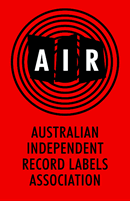
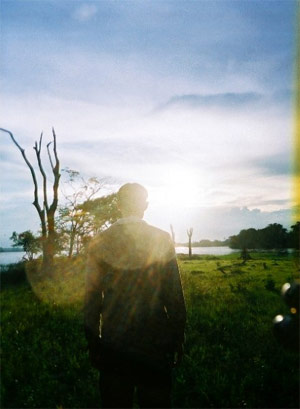
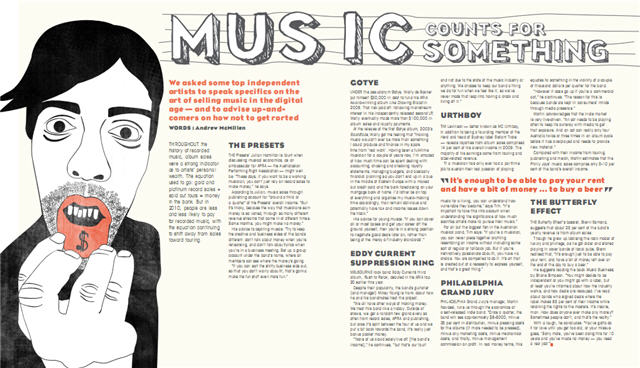

 The Beggars Group music blog strategy filters down to indie labels like Sydney’s
The Beggars Group music blog strategy filters down to indie labels like Sydney’s  Beyond Remote Control, EMI Music have maintained
Beyond Remote Control, EMI Music have maintained  Australian indie label
Australian indie label  Brisbane natives
Brisbane natives 
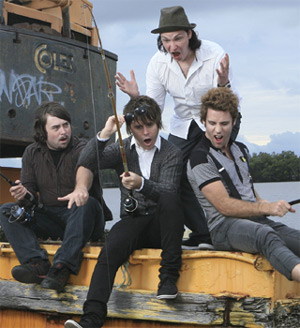 Brisbane’s
Brisbane’s 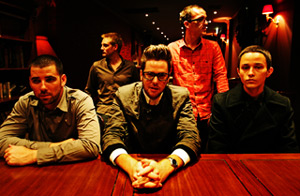 “I’m still a huge fan of putting on an album and listening to it all the way through. It’s very rare to experience an album that you can listen to from start to finish, and not get bored. It’s very rare to experience that, and it’s one of the things you look forward to in life, as a music fan – that next band that you’ll become completely obsessed with.” When questioned about the free MP3 downloads offered on the band’s Last.FM profile, Donaldson continues: “It’s still good for people to be able to download a song in reasonable quality, just in case they are thinking about downloading the full album. Because we’ve basically arrived at the situation where you can download a song for free, get a feel for the quality of it, and then decide whether you want to waste your bandwidth on it!”
“I’m still a huge fan of putting on an album and listening to it all the way through. It’s very rare to experience an album that you can listen to from start to finish, and not get bored. It’s very rare to experience that, and it’s one of the things you look forward to in life, as a music fan – that next band that you’ll become completely obsessed with.” When questioned about the free MP3 downloads offered on the band’s Last.FM profile, Donaldson continues: “It’s still good for people to be able to download a song in reasonable quality, just in case they are thinking about downloading the full album. Because we’ve basically arrived at the situation where you can download a song for free, get a feel for the quality of it, and then decide whether you want to waste your bandwidth on it!” It’s a valid comment, given that hip-hop song structures are perhaps more reliant on narrative than their rock counterparts. When asked about digital distribution’s effect on the album format, Levinson concedes: “It’s slowly changing people’s attitudes and expectations toward consumption of music. We’re in a transition period where albums retain a huge significance – but some signs suggest it’s disappearing. Stranger things have happened and trends don’t always result in their predicted outcome, though.”
It’s a valid comment, given that hip-hop song structures are perhaps more reliant on narrative than their rock counterparts. When asked about digital distribution’s effect on the album format, Levinson concedes: “It’s slowly changing people’s attitudes and expectations toward consumption of music. We’re in a transition period where albums retain a huge significance – but some signs suggest it’s disappearing. Stranger things have happened and trends don’t always result in their predicted outcome, though.”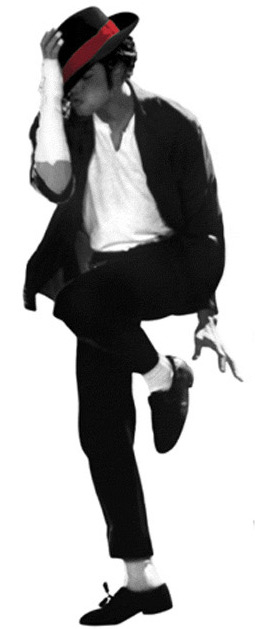 Regardless, Jackson’s enormous sales in the US simply couldn’t have eventuated ten years ago. Record stores inventories would’ve been exhausted across the country, and compact disc factories would’ve rushed to press more discs to meet the demand. Both of these outcomes still eventuated, but instead of experiencing weeks-long delays, music consumers have the option of instant online gratification: his 2.3 million download count resulted in six Jackson tracks appearing in the Billboard top ten.
Regardless, Jackson’s enormous sales in the US simply couldn’t have eventuated ten years ago. Record stores inventories would’ve been exhausted across the country, and compact disc factories would’ve rushed to press more discs to meet the demand. Both of these outcomes still eventuated, but instead of experiencing weeks-long delays, music consumers have the option of instant online gratification: his 2.3 million download count resulted in six Jackson tracks appearing in the Billboard top ten. At a national level, ARIA’s
At a national level, ARIA’s